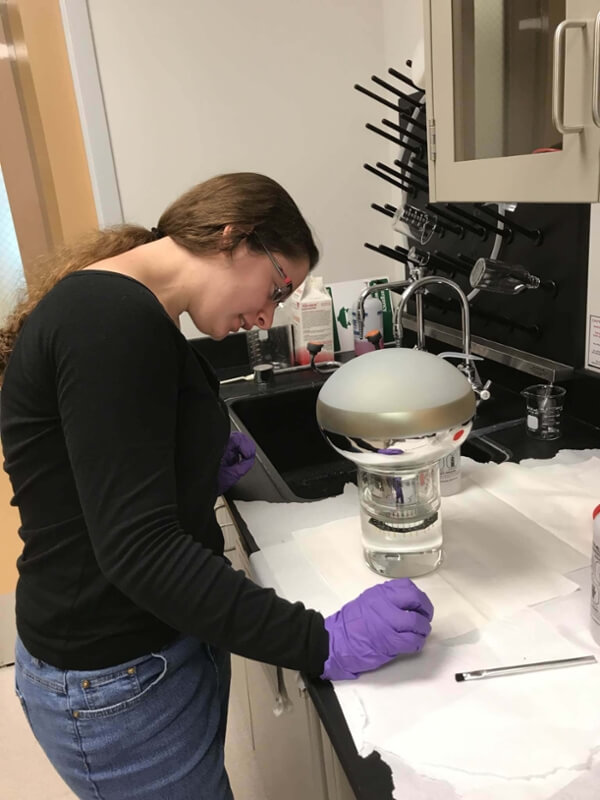August 3, 2017
The COHERENT experiment, running on the Spallation Neutron Source (SNS) at Oak Ridge National Lab, recently announced the discovery of a new type of neutrino interaction called "coherent elastic neutrino-nucleus scattering." In this process (abbreviated "CEvNS") a neutrino collides with a nucleus transferring enough energy to the nucleus so that it may be detected. Because the neutrino has a small mass and the nucleus is heavy, the energy of the recoiling nucleus is very small -- imagine a ping-pong ball (neutrino) hitting a bowling ball (nucleus). CEvNS, predicted to exist in 1974, has eluded discovery until now because of the challenging technology required to produce enough neutrinos and to detect the low energy nucleus. The recent result came from data collected over 1.5 years with a 15kg cesium iodide (CsI) crystal located in a well-shielded basement corridor of the SNS. The CsI detector is capable of detecting the very low energy nuclear recoils and the detector location has a very high flux of neutrinos from the SNS neutron source but a low rate of radiation background that may mask the CEvNS signal.
The IU scientists involved are in the experimental nuclear physics neutrino group led by Prof. Rex Tayloe along with Mike Snow; postdocs Ivan Tolstukhin and Tyler Thornton; graduate students Matthew Heath, Jacob Zettlemoyer, Daniel Winney, Ben Suh; undergraduate and Cox research scholar Maria Del Valle Coello; and technical staff Walt Fox, Gerard Visser, and John Vanderwerp.
Their effort on the project started with measurements of the background in the SNS area using the SciBath neutral particle detector that helped determine that the experimental area had the low background rates required. After those initial measurements, they deployed a 25kg liquid argon "CENNS-10" detector to double check the initial discovery with a different detector technology. These subsequent measurements will utilize the CEvNS process to investigate possible defects in the standard model of particle physics and to search for the dark matter.



